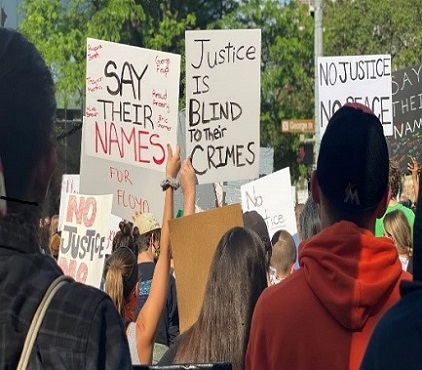Last updated: April 12, 2023
Lesson Plan
Civil Rights Then and Now (Grades 9-12) Carl Sandburg Home NHS

- Grade Level:
- High School: Ninth Grade through Twelfth Grade
- Subject:
- Literacy and Language Arts,Social Studies
- Lesson Duration:
- 60 Minutes
- Thinking Skills:
- Analyzing: Break down a concept or idea into parts and show the relationships among the parts. Evaluating: Make informed judgements about the value of ideas or materials. Use standards and criteria to support opinions and views.
Essential Question
How are civil rights similar and different to 100 years ago?
Objective
• Students will learn Sandburg’s view of civil rights through his writing and his involvement with the NAACP.
• Students will analyze historic photos and compare them with recent photographs of a similar event.
• Students will research, prepare and present various points of view regarding civil rights today.
Background
Carl Sandburg was the son of a Swedish American immigrant family. After completing the eighth grade, he went to work holding a variety of jobs: delivering milk, shining shoes, laying bricks, and more. In 1897 he rode the rail traveling as a hobo, meeting folks from all over the country--a journey which fostered the man whom he was about to become. His experiences greatly influenced his writing and political views. Sandburg lived during a time of great change in our country. He witnessed child labor, the labor rights movement, the Chicago race riots, segregation, women’s suffrage movement, the Great Depression, World War I and II, and more. In the early 1900’s Sandburg was an active member of the Social Democratic Party (as was Lilian Steichen, whom he married in 1908). Through his political activism and his writing, Sandburg spoke for those who had no words or power to speak for themselves, which is why he was and still is known today as “The Poet of the People.”
Preparation
Download "Civil Rights Then and Now" powerpoint then upload to Google Slides to push out to students virtually, or use in the classroom.
Materials
This Power Point file can be uploaded to Google Classroom as a Google Slide for use with digital learning.
Download Civil Rights Then and Now
Procedure
Procedure (Remote Learning)
- Share the Civil Rights: Then and Now PowerPoint with your students so that each student has their own copy (upload as a Google Slide and push out through Google Classroom). Students will follow the tasks to complete the assignment and then submit it to the teacher.
Procedure (In Person Learning)
Activating Strategy
Show the Civil Rights: Then and Now PowerPoint slides 3-6 with the students (one slide at a time). Have the students discuss the questions on each slide (students can also write answers and then share thoughts with the class).
Teaching Strategy
- Show students the video: 1919 Chicago Race Riots (link on slide 7)
- What do they learn about the causes that led to the Chicago Race riots?
- Are any of those issues still relevant today?
- Share with students the Civil Rights: Historic Images document for students to view the historic and modern photographs with Sandburg’s writing. (slides 8-10)
- How does Carl’s writing relate to the events in the photographs?
- What do you see in the photographs that is similar to events today? What is different?
- Share the PowerPoint in a way that students can type on the document to answer questions as they complete a photographic analysis of historical and modern photographs pertaining to civil rights. (slides 11-12).
Summarizing Strategy
Students will write a Tweet about their observations about Civil Rights today (slide 13). Allow students to share their Tweets with each other.
